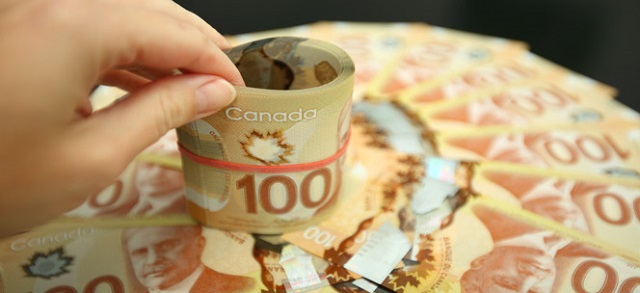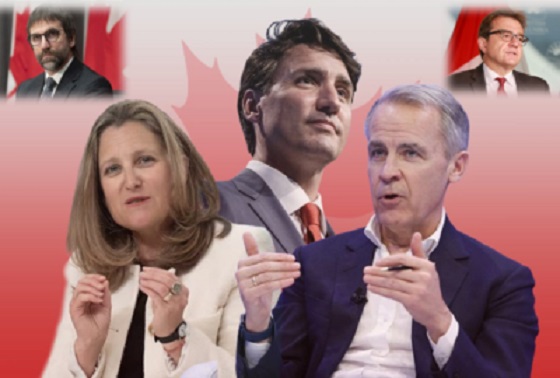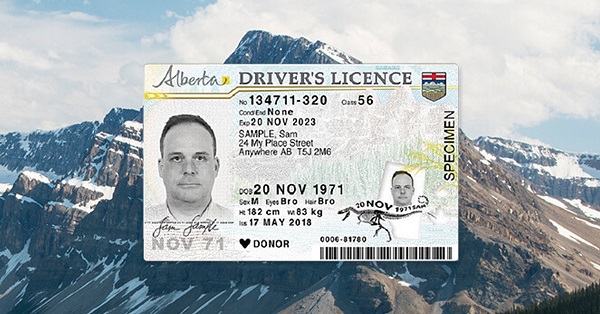Business
Carney government plans to spend millions convincing young Canadians about ‘climate emergency’

From the Fraser Institute
By Matthew Lau
$396,213 will go towards an organization that will create “Indigenous-led environmental literacy material to support kindergarten to Grade 12 teachers in Six Nations and Hamilton schools to ground youth environmental literacy in Haudenosaunee cultural perspectives.” According to that organization’s blog, “climate resilience” demands that we should be “rejecting capitalism and heteronormativity” and “environmental racism.”
In a recent announcement, the Carney government detailed more than $14.4 million in new spending for 17 projects to “empower young Canadians to address climate change.” The $14.4 million is just the latest round of funding out of a planned $206 million over five years. The purpose of the “Climate Action and Awareness Fund,” as the government calls it, is essentially to increase public concern about climate change.
To justify this $14.4 million in spending, Liberal MP Taleeb Noormohamed said “At this critical juncture, when our planet is facing a climate emergency, environmental literacy for young people is essential.”
Ironically, if the goal is to improve environmental literacy, one of the first things the government should do is stop saying “climate emergency”—a wholly inaccurate phrase meant to increase alarm. The evidence simply does not support claims of a climate emergency. Indeed, relative to a hypothetical planet without climate change, even worst-case scenarios suggest climate change would likely only reduce global per-person GDP (an indicator of living standards) by something like 16.5 per cent by 2200.
To be sure, 16.5 per cent of GDP is significant. But just a 16.5 per cent cut to incomes today would still leave us far better off than people who lived 175 years ago. A 16.5 per cent cut to the incomes of people living 175 years from now would almost certainly still leave them considerably better off than we are today. That’s no emergency.
Descriptions of the 17 projects further erode claims about an emergency. One project set to receive $939,592 in taxpayer money “will provide environmental knowledge, service-learning, and leadership opportunities for young Canadians, particularly Indigenous, BPOC, 2SLGBTQ+ youth and other underserved communities. This project will engage youth in community-based actions linked to the major environmental crises and provide training for educators to best integrate environmental education into their teaching.”
Imagine a real emergency for which you dial 9-1-1—say, an apartment building consumed in fire. You simply want the firetruck to arrive and firefighters to extinguish the fire as quickly as possible. You do not care if the firefighters are Indigenous, Black or from a sexual minority. Similarly, if climate change was really an emergency, government would direct all the resources towards whoever and whatever could mitigate it most effectively, as opposed to distributing resources according to racial or other diversity targets.
Other taxpayer-funded projects include $782,922 to help children and youth in northwestern Ontario and eastern Manitoba “become climate leaders in their communities.” And $342,524 to give young people, particularly in Alberta, “perspectives to help them overcome current environmental challenges and participate in eco-advocacy.”
Another $396,213 will go towards an organization that will create “Indigenous-led environmental literacy material to support kindergarten to Grade 12 teachers in Six Nations and Hamilton schools to ground youth environmental literacy in Haudenosaunee cultural perspectives.” According to that organization’s blog, “climate resilience” demands that we should be “rejecting capitalism and heteronormativity” and “environmental racism.”
Based on the project descriptions and organizations receiving the taxpayer money, a reasonable person might deduce that at least a significant chunk of the $14.4 million in the latest funding round—and the total $206 million over five years—will pay for politically charged activism targeting young people, not actual educational initiatives. This spending should be cancelled. The last thing taxpayers need is more Greta Thunbergs and higher taxes.
Business
Crown corporations dish out $190 million in bonuses

The federal government rubberstamped more than $190 million in bonuses to Crown corporations in 2024-25, according to government records obtained by the Canadian Taxpayers Federation.
“Bonuses are for when you do a good job, they shouldn’t be handed out like participation trophies,” said Franco Terrazzano, CTF Federal Director. “Taxpayers can’t afford to bankroll big bonus cheques each and every year for highly paid government executives.
“Here’s a crazy idea: maybe the government should stop handing out bonuses when it’s borrowing tens of billions of dollars every year.”
The records detailing Crown corporation bonuses for 2024-25 were released in response to an order paper question submitted by Conservative member of Parliament Andrew Scheer (Regina-Qu’Appelle).
Crown corporations dished out $190.3 million in bonuses for the last fiscal year, according to the records. The records break down both executive and non-executive bonuses.
The Business Development Bank of Canada issued more bonuses than any other Crown corporation, with its bureaucrats taking home more than $60 million. Every executive took a bonus, with the average executive bonus totalling $216,000, according to the records.
Several failing Crown corporations rubberstamped bonuses.
The Canada Mortgage and Housing Corporation rubberstamped $30.6 million in bonuses last year. Nearly 99 per cent of CMHC executives took a bonus, for an average executive bonus of $42,900, according to the records.
The CMHC has repeatedly claimed it’s “driven by one goal: housing affordability for all.”
In 2024, the Royal Bank of Canada said it was the “toughest time ever to afford a home.” More than 70 per cent of Canadians who do not own a home said “they have given up on ever owning” one, according to polling from Ipsos.
VIA Rail also dished out $11 million in bonuses in 2024-25. The records show 100 per cent of its executives took a bonus last year. The average bonus for VIA Rail executives is $110,000.
VIA Rail’s operating losses totaled $385 million in the most recent year, according to its latest annual report. The government bailed out VIA Rail to the tune of $1.9 billion over the last five years just to cover the train company’s operating losses.
The Canada Infrastructure Bank dished out $8.6 million in bonuses in 2024-25. The records show 83 per cent of its executives took a bonus, for an average executive bonus of $197,000.
“The CIB is not expected to reach its disbursement goals in any sector by 2027-28,” according to the Parliamentary Budget Officer.
In May 2022, the House of Commons Standing Committee on Transport, Infrastructure and Communities tabled a report with only one recommendation: “The Government of Canada abolish the Canada Infrastructure Bank.”
Multiple Crown corporations including Canada Post and the National Capital Commission, did not provide bonus records for 2024-25. Both Crown corporations said they had “nothing to report at this time.”
Federal departments and agencies have yet to provide bonus figures for 2024-25. However, the government rubberstamped more than $1.5 billion in bonuses to bureaucrats employed by federal departments and agencies between 2015 and 2023. The bonuses kept flowing despite the fact that “less than 50 per cent of [performance] targets are consistently met within the same year,” according to the PBO.
Prime Minister Mark Carney is requiring Crown corporations to propose savings of up to 15 per cent of their spending by 2028, according to media reports.
“The first thing on Carney’s chopping block should be taxpayer-funded bonuses,” Terrazzano said. “We need a culture change in Ottawa and that means the government must stop rewarding failure with taxpayers’ money.”
Table: Crown corporations with highest bonuses 2024-25
| Crown corporation | Total bonuses | Executives who got a bonus | Average executive bonus |
| Business Development Bank of Canada |
$60,742,616 |
100% |
$216,093 |
| Export Development Canada |
$45,044,281 |
79% |
$143,323 |
| Canada Mortgage and Housing Corporation |
$30,636,283 |
99% |
$42,982 |
| Royal Canadian Mint |
$12,155,211 |
N/A |
N/A |
| VIA Rail |
$11,031,412 |
100% |
$110,768 |
Business
Canadian gov’t spending on DEI programs exceeds $1 billion since 2016

From LifeSiteNews
Some departments failed to provide clear descriptions of how the taxpayer funds were used. For example, Prairies Economic Development Canada spent $190.1 million on projects related to diversity, equity and inclusion ventures but could not provide details.
Federal diversity, equity and inclusion programs have cost Canadian taxpayers more than $1 billion since 2016.
According to information published September 18 by Blacklock’s Reporter, diversity, equity and inclusion (DEI) government grants have totaled $1.049 billion since 2016, including grants for “cultural vegetables.”
A $25 million grant, one of the largest individual grants, was given to the Canadian Gay and Lesbian Chamber of Commerce to “strengthen Canada’s entrepreneurship ecosystem to be more accessible to LGBTQ small businesses.”
The government payouts were distributed among 29 departments, ranging from military to agricultural projects.
The Department of Agriculture spent $90,649 for “harvesting, processing and storage of cultural vegetables to strengthen food security in equity-deserving Black communities” in Ontario.
Some departments failed to provide clear descriptions of how the taxpayer funds were used. For example, Prairies Economic Development Canada spent $190.1 million on projects related to diversity, equity and inclusion ventures but could not provide details.
“PrairiesCan conducted a search in our grants and contributions management system using the keywords ‘equity,’ ‘diversity’ and ‘inclusion,’” the Inquiry said. “Certain projects were included where diversity, equity and inclusion were referenced but may not be the main focus of the project.”
DEI projects are presented as efforts by organizations to promote fair treatment, representation, and access to opportunities for people from varied backgrounds. However, the projects are often little more than LGBT propaganda campaigns funded by the Liberal government.
As LifeSiteNews reported, the University of British Columbia Vancouver campus posted an opening for a research chair position that essentially barred non-homosexual white men from applying for the job.
Additionally, during his short time in office, Liberal Prime Minister Mark Carney has already shown Canadians that he is a staunch supporter of the LGBT agenda after he spent over $2 million in taxpayer funding on LGBT groups during his first week in office.
Canadians have repeatedly appealed to Liberals to end pro-LGBT DEI mandates, particularly within the education system.
As LifeSiteNews previously reported, in June 2024, 40 Canadian university professors appealed to the Liberal government to abandon DEI initiatives in universities, arguing they are both ineffective and harmful to Canadians.
-

 Business2 days ago
Business2 days agoCarney’s ‘major projects’ list no cause for celebration
-

 Business2 days ago
Business2 days agoGlobal elites insisting on digital currency to phase out cash
-

 Business2 days ago
Business2 days agoRed tape is killing Canadian housing affordability
-

 Health2 days ago
Health2 days agoMAiD should not be a response to depression
-

 Artificial Intelligence2 days ago
Artificial Intelligence2 days agoUK Police Chief Hails Facial Recognition, Outlines Drone and AI Policing Plans
-

 Business1 day ago
Business1 day agoOttawa’s so-called ‘Clean Fuel Standards’ cause more harm than good
-

 Business1 day ago
Business1 day agoThe Truth Is Buried Under Sechelt’s Unproven Graves
-

 International2 days ago
International2 days agoFrance records more deaths than births for the first time in 80 years







